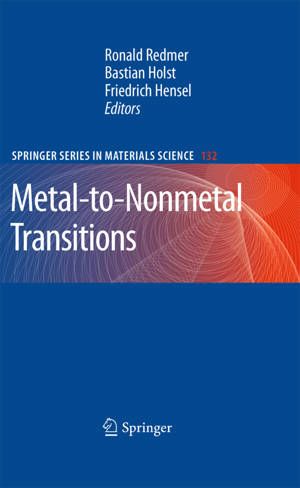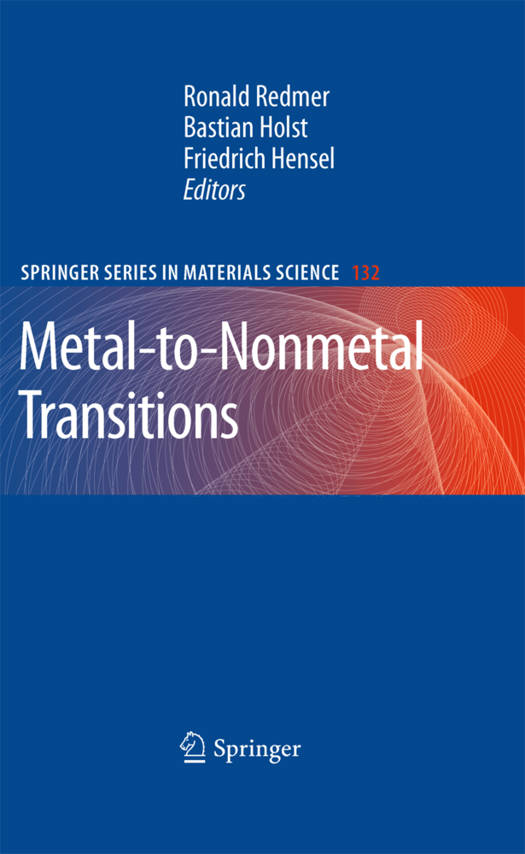
En raison de travaux planifiés, le Cloud Vivlio ne sera pas accessible le mardi 9 juillet entre 00h00 et 05h00. Les E-Books achetés pendant cette période seront activés par la suite.
- Retrait gratuit dans votre magasin Club
- 7.000.000 titres dans notre catalogue
- Payer en toute sécurité
- Toujours un magasin près de chez vous
- Retrait gratuit dans votre magasin Club
- 7.000.000 titres dans notre catalogue
- Payer en toute sécurité
- Toujours un magasin près de chez vous
Metal-To-Nonmetal Transitions
105,45 €
+ 210 points
Description
Materialscanbedividedintometalsandnonmetals.Thecharacteristicfeature ofmetalslikecopperandaluminumisahighelectricalandthermalconduct- ity, while nonmetals such as phosphor and sulfur are insulators. The electrical 6 1 ?1 conductivity varies over many orders of magnitude, from 10 ? m for ?20 ?1 ?1 typical metals down to 10 ? m for almost ideal insulators. However, a sharp separation between metals and insulators is in general not possible. For instance, semiconducting materials such as silicon and germanium ?ll the conductivity domain between metals and insulators. Their electrical cond- tivity is dependent on temperature and, in addition, canbe variedstronglyby doping the material with donor or acceptor atoms. A famous example is the sharp insulator-to-metal transition measured in Si: P at temperatures below 18 ?3 0.1K and donor concentrations of about 3.8×10 cm phosphor atoms [1]. Furthermore, materials may exist in both states: carbon is metallic as graphite and insulating as diamond. A fascinating quantum e?ect is observed at low temperatures: some materials even loose their electrical resistivity and becomesuperconductors.Therefore, thequestionsWhatisametal?andWhen does a metal transform into a nonmetal? are of fundamental interest and - lated to many aspects of modern physics and chemistry. We refer the int- ested reader to the very nice introduction into this diverse topic given by Edwards [2].
Spécifications
Parties prenantes
- Editeur:
Contenu
- Nombre de pages :
- 200
- Langue:
- Anglais
- Collection :
- Tome:
- n° 132
Caractéristiques
- EAN:
- 9783642039522
- Date de parution :
- 11-03-10
- Format:
- Livre relié
- Format numérique:
- Ongenaaid / garenloos gebonden
- Dimensions :
- 155 mm x 234 mm
- Poids :
- 430 g






